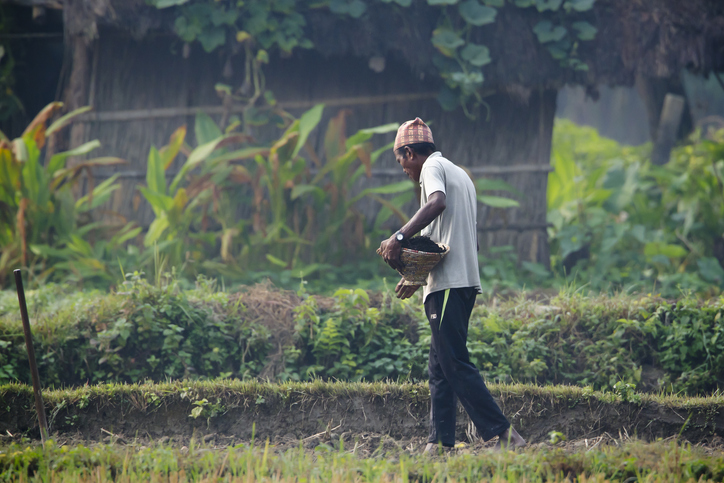fertiliser crisis | agriculture | international prices | policy

Fertiliser prices nearly doubled between mid-2020 and the end of 2021. Since the start of the year, prices have yet again risen by more than 30%. Prices are flirting with the levels of the 2008-09 financial crisis. Both supply and demand-side factors contributed to this. The main types of fertilisers are nitrogen-based fertiliser, potash and phosphates.
Rising natural gas prices (a key ingredient for nitrogen-based fertiliser) forced European countries to cut back on the production of nitrogen-based fertiliser. In China, soaring coal prices led fertiliser factories to cut ammonia production, contributing to the increase in urea prices. Sanctions imposed on Russia and Belarus in response to the war in Ukraine caused prices to increase further. Russia’s production of urea and DAP accounts for 16% and 12% of global exports, respectively. Belarus produces 18% of the world’s potash.
All this happened against the backdrop of strong global fertiliser consumption and demand. From 1960 through 2015, the share of the world’s population feeding on crop production without fertiliser use dwindled from 87% to 52%.
Surging prices threaten to exacerbate the perennial problem of fertiliser shortage ahead of peak planting season. This is happening at a time when many farmers have become increasingly dependent on fertilisers for plantations (demand for chemical fertilisers is increasing by more than 18% annually) in Nepal. Soaring costs will contribute to higher food prices, worsening already high inflation, and push many poor people deeper into poverty. Farmers’ profit margins will shrink, because of the rising fertiliser prices and energy. If farmers decide to cut back on fertiliser, the country will see lower crop yields, raising concern for food security. Crops are already suffering from extreme weather events made frequent by climate change.
The annual demand for fertilisers stands at about 700,000 tonnes, reckons the Ministry of Agriculture and Livestock Development. But the country imports just around 300,000 tonnes.
This could be explained by both local and external factors. One is volatile prices. Nepali fertiliser prices move in tandem with the world fertiliser prices rather than with Indian prices, which are relatively stable. Subsidies help offset the fluctuations, though comes at a higher fiscal burden. For example, the same 500,000 tonnes of fertilisers which used to cost 15 billion rupees two years ago now cost 75 billion rupees for the government.
The fertiliser shortage problem impinges farmers even more than the global surge in fertiliser prices. Because fertilisers are subsidised. A 50-kg bag of DAP costs more than 6,500 rupees in the international market. Yet farmers pay only 2,200 rupees at home because of the subsidy. Farmers are tempted to grow more crops when fertiliser prices are high because they can sell for higher prices. But the shortage means they cannot do this.
That it should come to this
In recent years, the shortage has become a constantly recurring headache both for farmers and the government. As farmers across the country begin sowing paddy seeds, fertilisers, such as urea, are lacking in abundance. Province 1 alone consumes at least 18,000 and 25,000 tonnes of DAP and urea for the monsoon’s paddy plantation, respectively. This is going to likely reduce harvests.
Sanctions on Russia for its atrocity on Ukraine means there will be shortage of fertilisers in most countries. Nitrogen-based fertilisers is Russia’s biggest export, the second biggest is potash and the third is phosphates. Last year, Russia exported more than 30% of the fertilisers to 25 countries each. Energy-security concerns are restricting European countries from using natural gas to produce nitrogen-based fertiliser, decreasing supply. Adding to supply concerns, China has suspended fertiliser exports until June to meet domestic demand. Its DAP and urea exports account for nearly one-third and one-tenth of global trade, respectively.
If it is hard to increase supply, can demand be decreased? Modern farming techniques allow for targeted use of fertilisers. But they are expensive to implement – at least for Nepal. What about farming without chemical fertilisers? This approach will risk production as Sri Lanka’s experience shows. For now, there’s no easy solution for the shortage.
Read More Stories
Kathmandu’s decay: From glorious past to ominous future
Kathmandu: The legend and the legacy Legend about Kathmandus evolution holds that the...
Kathmandu - A crumbling valley!
Valleys and cities should be young, vibrant, inspiring and full of hopes with...
Today’s weather: Monsoon deepens across Nepal, bringing rain, risk, and rising rivers
Monsoon winds have taken hold across Nepal, with cloudy skies and bouts of...